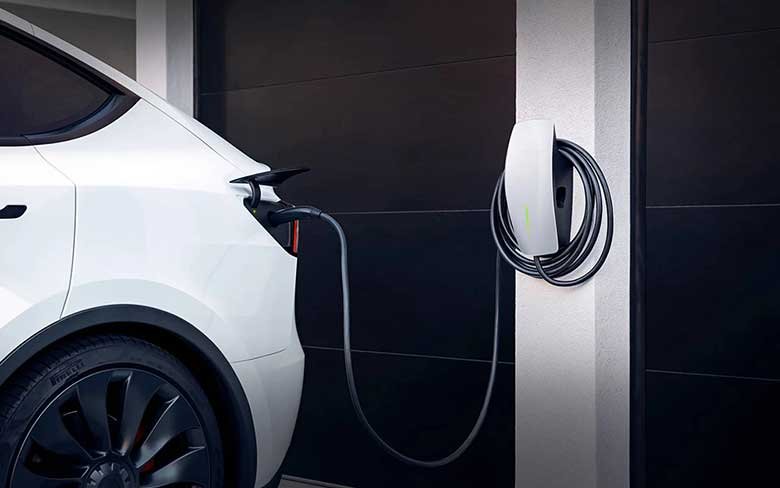DIFFERENCE BETWEEN AC & DC
You can charge an electric vehicle with alternating current (AC) and direct current (DC) power. Electric cars can only store DC power; however, the current coming from the grid is AC. Therefore, cars usually have a converter built into the plug that transforms AC power to DC. Most of the vehicles have this “onboard charger” that will convert AC to DC power to fuel the car and most of charging stations also use this type of charging1.
DC chargers have their own converter so the power that goes into the car does not need to go through the onboard charger, which makes these chargers bigger and faster. They are usually found in public charging stations but we can start seeing them at some home stations2.
In short, the main difference between AC and DC charging relies in where the power is getting transformed (inside or outside the car).
DIFFERENT EV CHARGING CONNECTORS TYPES

Ilustración 1: Illutration from EnelX (2019)
Not all connectors or plugs are the same, we can even find different type standard across countries or car manufacturers. Additionally, chargers have different levels of power available3.
In North America car manufacturers use the SAE J1772 (Type 1) connector for level 1 (120 volt) and level 2 (240 volt). Except for Tesla, that have their own charger, but they also provide a J1772 adapter cable which means that North Americans can use charging stations with J1772 connectors4.
As we previously explained, DC chargers are normally found in public stations since the electricity requirements are usually not available in residential buildings. They use 480 volts and can recharge a car in 20 minutes; however, it is not recommended to use them frequently since they can damage the car’s battery5.
They use 3 different types of connectors but we will just focus on the ones standardized in North America. On one hand, the Combined Charging System (CCS), uses the J1772 connector combined with high speed pins. On the other hand, the Tesla connector is the same for level 1, 2 and DC fast charge (it accepts all voltage). Only Tesla cars can use Dc fast chargers, better known as Superchargers6.
HOW MUCH DOES IT COST TO OWN, CHARGE & RUN AN ELECTRIC CAR ?
Cost of running EV depends of the model, as it happens with fuel cars. However, electricity is cheaper than fuel and these cars usually require less maintenance than traditional cars. This makes EV cheaper over the course of ownership.
Public stations usually charge by hour and the price varies regarding the location; additionally, fast charging stations are more expensive. Home charging can be more cost friendly. However, you may be able to find some free public stations to charge your EV7.
Report from Uswitch (2020) – says that charging an EV costs around $272 CAD per year, making Canada one of the cheapest countries to charge an EV.
In an article from Forbes (2018) – we can read that “the average cost to operate an EV in the United States is $485 per year, while the average for a gasoline-powered vehicle is $1,117, according to the study by Michael Sivak and Brandon Schoettle of Michigan’s Transportation Research Institute.” It also says that maintenance cost is also lower, because of several factors such as not needing to change the oil, not having exhaust system or having fewer moving parts.
On Plug n’ Drive website – we can find some information about charging costs in public stations. On one hand, in level 2 stations (240volt), the average pay per use is $1/hour or $2,5/charge and with 1 hour charge, you would 30km of driving range. On the other hand, in level 3 (400volt to 900voly) public charging stations also known as DC Fast Charging Stations or Supercharging, an hour of charge could give you 250 km of driving range. They can charge up to 80% of the battery in 30-45 minutes and they usually bill by minute being the average cost of $15/h.
REFERENCES
1-2 Wallbox. (2021). EV Charging Current: What’s the Difference Between AC and DC?
3-4-5-6 EnelX. (2019). The Different EV Charging Connector Types.

